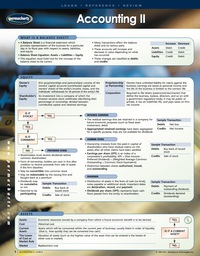Question
You have just been hired by Hewlett-Packard (HP) in its capital budgeting division. Your first assignment is to determine the net cash flows and NPV
You have just been hired by Hewlett-Packard (HP) in its capital budgeting division. Your first assignment is to determine the net cash flows and NPV of a proposed new type of portable computer system similar in size to an iPhone, but which has the operating power of a highend desktop system. Development of the new system will initially require an investment equal to 10% of net property, plant, and equipment (PPE) for the fiscal year ended October 31, 2020. The project will then require an additional investment equal to 10% of the initial investment after the first year of the project, 5% of the initial investment after the second year, and 1% of the initial investment after the third, fourth, and fifth years. The product is expected to have a life of five years. First-year revenues for the new product are expected to be 3% of total revenue for HPs fiscal year ended October 31, 2020. The new products revenues are expected to grow at 15% for the second year, then 10% for the third, and 5% annually for the final two years of the expected life of the project. Your job is to determine the rest of the cash flows associated with this project. Your boss has indicated that the operating costs and net working capital requirements are similar to the rest of the companys products and that depreciation is straight-line for capital budgeting purposes. Welcome to the real world. Since your boss hasnt been much help, here are some tips to guide your analysis: a) Obtain Hewlett-Packards financial statements. Download or copy paste the annual income statements, balance sheets, and cash flow statements for the last four fiscal years (2017 2020) from Yahoo finance. Enter Hewlett-Packards ticker symbol (HPQ) and then go to Financials. Click Annual, to ensure youre getting annual data. (10 marks) b) You are now ready to determine the free cash flow. Compute the free cash flow for each year using the Free Cash Flow formula: Free Cash Flow = (NOPAT + Depreciation) CAPEX Change in NOWC Set up the timeline and computation of the free cashflow in separate, contiguous columns for each year of the project life. Be sure to make outflows negative and inflows positive. (5 marks) i. Assume that the projects cost will be a constant percentage of revenue. To calculate the cost percentage, use 2020 data by adding up all operating cost (cost of Revenue, Expenses and R&D) and divide by Revenue. (5 marks) ii. Determine the annual depreciation by assuming HP depreciates these assets by the straight-line method over a 10-year life. (5 marks) CONFIDENTIAL 3 / 5 BFN 1013 (BBAIB) JULY 2021 iii. Determine HPs tax rate from 2020 Income statement. Remember that income tax rate can be calculate by using the formula; (Income Before Tax Income After Tax)/Income Before Tax. (5 marks) iv. Calculate the net working capital required each year by assuming that the level of NWC will be a constant percentage of the projects sales. Use HPs 2020 NWC/Sales to estimate the required percentage. (Use only accounts receivable, accounts payable, and inventory to measure working capital.) (10 marks) v. To determine the free cash flow, calculate the additional capital investment and the change in net working capital each year. (5 marks) c) Determine the IRR of the project and the NPV of the project at a cost of capital of 12% using the Excel functions. For the calculation of NPV, include cash flows 1 through 5 in the NPV function and then subtract the initial cost.
Step by Step Solution
There are 3 Steps involved in it
Step: 1

Get Instant Access to Expert-Tailored Solutions
See step-by-step solutions with expert insights and AI powered tools for academic success
Step: 2

Step: 3

Ace Your Homework with AI
Get the answers you need in no time with our AI-driven, step-by-step assistance
Get Started


